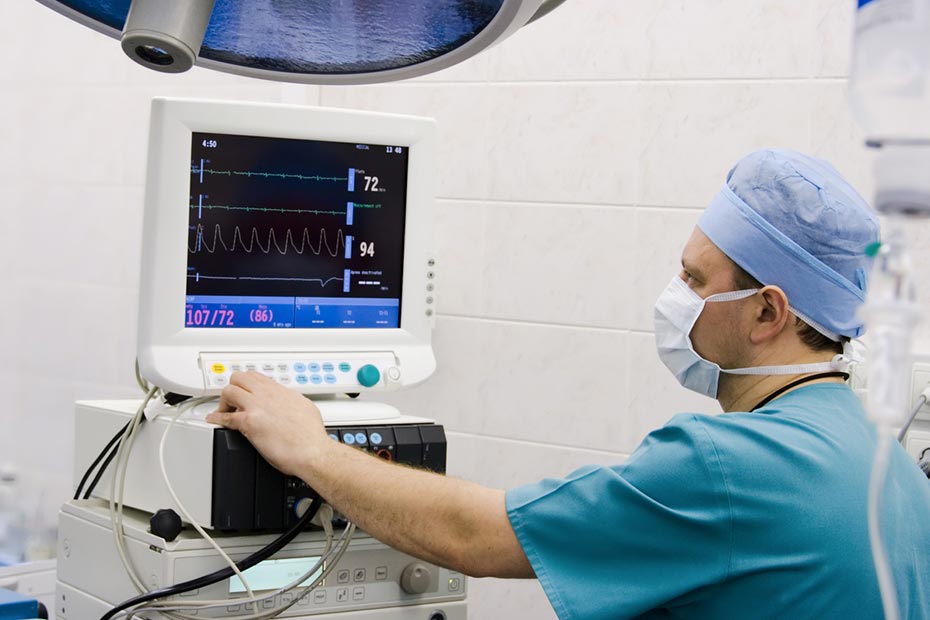“I think there’s a misconception that surgery is a gruelling grind of a lifestyle, and you’ll never see your family, and you’ll hate your life … but surgery has changed a lot over the last 10, 20 years. It’s not what it used to be,” says Dr. John Harlock, a vascular surgeon and an associate professor at McMaster University.
Cardiac, vascular and thoracic (CVT) surgery is a diverse and technical set of related specialties broadly concerned with the chest, heart, lungs and blood vessels.
Here’s a breakdown of these specialties and answers to questions about training and certification, developments in the field, and work-life balance.
What is the difference between cardiac, vascular and thoracic surgeries?
- Cardiac Surgery (cardiovascular surgery or heart surgery) deals with diseases and conditions of the heart and the ascending aorta.
- Vascular Surgery deals with blood vessels from the chest downwards, including the blood vessels that feed the intestines, the kidneys and the legs.
- Thoracic Surgery is concerned with diseases of the chest wall, mediastinum, lungs, trachea, pleura, esophagus and diaphragm.
The Canadian Medical Association combines these three specialties as CVT surgery; however, the Royal College of Physicians and Surgeons of Canada separates them for certification.
What are the education pathways to becoming a CVT surgeon?
Both cardiac and vascular surgery are primary entrance specialties, meaning that after completing medical school, graduates must do six years of approved residency training in core general surgery, cardiac, vascular and thoracic surgery. After completing your residency, you may pursue other fellowships and subspecialties within CVT.
Thoracic surgery was once a primary entry specialty but now requires certification in general surgery, cardiac surgery, or enrolment in a Royal College-approved training program in these areas. You must be certified in a primary specialty to be eligible to write the Royal College certification examination in thoracic surgery.
Did you know? Vascular surgery is one of Canada’s most in-demand specialties: Canada’s Top 5 Most (and Least) Competitive Residencies in 2022.
What is a typical day like for a vascular surgeon?
Dr. Harlock says his days and weeks are varied, combining time in the operating room and the clinic doing research and teaching.
“I’m usually in the OR about two days per week. The nice thing about vascular surgery versus cardiac surgery is that the days can be quite varied even in terms of operations: we do a lot of stents or endovascular procedures, we’re fixing aneurysms or blockages, and we also deal with traumas and major bleeding.”
In his clinic, Dr. Harlock consults with pre- and post-operative patients. He does more minor procedures like AV fistulas for people who need dialysis or varicose vein treatment or injections.
Most CVT surgeons work in an academic health sciences centre, but other main work settings include teaching hospitals, community hospitals, clinics or universities.
What qualities make a good CVT surgeon?
According to Dr. Harlock, patience, leadership and level-headedness are key qualities in any good surgeon.
CVT surgeons have a lot of direct patient contact, so it’s important to enjoy interacting with people. While patients are often seriously ill, treatment can result in immediate and dramatic improvement, making this a potentially highly rewarding part of the specialty. However, it can involve long and irregular hours, and life-and-death situations and emergencies require rapid, critical decisions under pressure.
“You have to be dedicated to serving, and you have to enjoy being in the operating room and seeing many patients. There can be great outcomes, and we do a lot of great work, but there can also be quite stressful situations because people can die in the operating room or in the emergency room. You have to be able to keep a level head and roll with situations and be very aware of your surroundings,” says Dr. Harlock.
What developments in CVT specialties can students look forward to?
Over the years, many surgeries have become less invasive thanks to technological advancements, including camera and robotic techniques.
“One of the reasons why I got into this specialty 12 years ago is that there’s this huge new revolution of medical technology, and the sky’s the limit with where that goes,” says Dr. Harlock.
For example, Dr. Harlock does endovascular surgery, which involves using X-ray and ultrasound guidance to fix blockages or aneurysms inside blood vessels. Thoracic surgeons also use robot-assisted guidance to make lung surgery much less invasive.
“There’s a host of booming technology and company involvement and research in endovascular techniques in terms of what can be done inside people’s blood vessels.”
How is the work/life balance for a CVT surgeon?
“I tell people, you have to enjoy what you like about the specialty, but you also have to not really hate what you don’t like about it,” explains Dr. Harlock. CVT specialties require a lot of patience and long working hours. However, he says surgery has changed a lot in the past two decades, and it’s not always the gruelling lifestyle many might expect.
“What was an older, male-dominated specialty many years ago is now a great mix of different people. It’s a lot more friendly nowadays in terms of the training and the actual lifestyle … people have kids and families and take time off, and there’s a lot more respect for people having lives now.”
Any advice for future graduates?
Given the ability to impact patients’ lives and evolving technology — and the need for more CVT specialists in Canada — Dr. Harlock urges students to learn more about CVT surgery. He also encourages students to speak to practising CVT surgeons to learn more about the specialty, ask questions, and gain exposure.
“Make sure to take some time to explore these specialties because it may really interest you.”
Additional resources:
- The Royal College of Physicians and Surgeons of Canada — Cardiac Surgery Information
- CMA: Cardiovascular/Thoracic Surgery Profile
- The Canadian Cardiovascular Society
- The Canadian Society for Vascular Surgery
- The Canadian Association of Thoracic Surgeons
Related stories:
This article is intended as general information only and is not to be relied upon as constituting legal, financial or other professional advice. A professional advisor should be consulted regarding your specific situation. Information presented is believed to be factual and up-to-date but we do not guarantee its accuracy and it should not be regarded as a complete analysis of the subjects discussed. All expressions of opinion reflect the judgment of the authors as of the date of publication and are subject to change. No endorsement of any third parties or their advice, opinions, information, products or services is expressly given or implied by Royal Bank of Canada or any of its affiliates.



















